Komentáře / Otázky (238)
![]() Ann napsala:
Ann napsala:
Hej Jeg har udfordring med spidsen af huen. De 15 masker der er tilbage på pinden er øreklappernes. Hvordan får jeg 5 masker tilbage når der skal strikkes 2x9 masker på retsiden Hilsen Ann
16.06.2025 - 13:59Odpověď DROPS Design :
Hei Ann. De 15 maskene som er tilbake på pinnen er til spissen (toppen på luen). Øreklaffene er de nederste spissene ved 2. og 6. merke. Når du har 15 masker følger du resten av oppskriften for å strikke toppen / spissen på luen. mvh DROPS Design
23.06.2025 - 09:12
![]() Zofia napsala:
Zofia napsala:
Skoro mam narzucić 135 oczek, to czy oczka brzegowe są już w to wliczone, czy mam dodatkowo narzucić jeszcze dwa oczka?
05.01.2025 - 13:50Odpověď DROPS Design :
Witaj Zofio, tak są wliczone. Nabierasz tyko 135 oczek. Pozdrawiamy!
05.01.2025 - 18:40
![]() Dagmar napsala:
Dagmar napsala:
Ist es richtig, dass man für den Kopfumfang 47-48 cm statt 141 Maschen 142 Maschen aufnehmen muss, denn wenn der 6. Markierer in der 114 Masche ist und dann noch 28 Maschen addiert werden sind es insgesamt 142 Maschen.
08.10.2024 - 11:31Odpověď DROPS Design :
Liebe Dagmar, ja genauso sollen die Markierer eingesetzt werden; es sind 26 Maschen am Ende der Reihe (zwischen 6. und 7. Markierer) und 27 M zwischen 1. und 2. Markierer. Viel Spaß beim Stricken!
08.10.2024 - 16:28
![]() Jesse napsala:
Jesse napsala:
Hi Drops, what is meant by ' if the tension in height is not correct you can work as before with the increase/decrease'? Thank you for the nice pattern
04.09.2024 - 07:40Odpověď DROPS Design :
Dear Jesse, if your tension is not right in height, continue working increases/decreases as before until piece measures the correct height (number of sts is still always the same). Happy knitting!
04.09.2024 - 08:56
![]() N Boelaars napsala:
N Boelaars napsala:
Wat wordt er bedoelt met "De maten zijn aangepast en 2 markeerdraden voor het meerderen/minderen zijn 1 steek verschoven." A) welke 2 (van de 7) markeerdraden worden verschoven? B) welke kant op? naar Links of naar rechts?
16.04.2024 - 15:13Odpověď DROPS Design :
Dag N Boelaars,
De correcties zijn al doorgevoerd in het online patroon, dus als je het patroon uitprint dat nu online staat hoef je daar verder niet om te denken.
17.04.2024 - 21:58
![]() Rikke napsala:
Rikke napsala:
Hei. Det står i oppskriften: Arbeidet måler 6 cm fra oppleggskanten - ... Hvor på arbeidet skal jeg måle? På en av spissene (fellingene) eller der hvor det økes masker? Eller et annet sted?
10.03.2024 - 22:43Odpověď DROPS Design :
Hej Rikke, du skal måle imellem mærkerne - husk at du også finder en video som viser de forskellige momenter :)
13.03.2024 - 15:11
![]() Le Na napsala:
Le Na napsala:
Hallo, wenn es weniger wie die 6 cm sind, wieso ohne Zu- und Abnahmen weiter stricken? Kann ich nicht mit den Zu- und Abnahmen weiter stricken? Sonst werden die drei erhöhten Linien doch unterbrochen? Vielen Dank im voraus für die Antwort.
26.11.2023 - 21:10
![]() Le Na napsala:
Le Na napsala:
Kann ich die Mütze nicht auch rund stricken und mir das zusammen nähen sparen?
23.11.2023 - 20:34Odpověď DROPS Design :
Liebe Le Na, wahrscheinlich, aber dann sollen Sie die Anleitung so anpassen, es kann einfacher sein, die Arbeit in Reihen wie bei der Anleitung zu stricken. Viel Spaß beim stricken!
24.11.2023 - 07:57
![]() Lis napsala:
Lis napsala:
Indtagningerne på Alladin kan sagtens strikkes med de 2 strikkepinde (uden brug af hjælpepind): "Tag den markerede maske + masken før ret løs af (sammen), strik næste retmaske og træk de 2 løst aftagne masker over." Så enkelt kan det gøres, og indtagningerne ligger på samme fine måde som i opskriften. Men hvorfor skal vi dog bruge en hjælpepind og gøre indtagningerne mere besværlige? Mvh Lis.
19.08.2023 - 03:06Odpověď DROPS Design :
Hei Lis Har du en teknikk du syns er enklest og den gir det samme uttrykket, bruk den. Dett fins mange, mange muligheter til å felle, og vi prøver å tilfredstille alle våre brukere og viser forskjellige teknikker. Noen liker denne teknikken, men andre liker den teknikken du beskriver. mvh DROPS Design
21.08.2023 - 11:07
![]() 42n8 napsala:
42n8 napsala:
E' possibile lavorare questo modello con i ferri circolari o a doppia punta?
14.02.2023 - 11:39Odpověď DROPS Design :
Buonasera 42n8, può lavorare il modello in piano anche sui ferri circolari. Buon lavoro!
14.02.2023 - 22:22
Alladin#alladinhat |
|
|
|
|
Dětská špičatá čepice pletená z příze DROPS Alpaca
DROPS Baby 21-34 |
|
|
TIP - PŘIDÁVÁNÍ: Přidáváme vždy v lícových řadách. PŘED i ZA označeným okem 1x nahodíme. V následující řadě pleteme nahození obrace za zadní nit, tj. anglicky, aby v pletenině nevznikaly dírky. TIP - UJÍMÁNÍ: Ujímáme vždy v lícových řadách, a to na obou stranách označeného oka. PŘED označeným okem: 1 oko sejmeme na pomocnou jehlici ZA práci, 1 oko sejmeme (= označené oko), spleteme hladce následující oko s okem z pomocné jehlice a sejmuté oko přes ně přetáhneme. --------------------------------------------------------------------- ČEPICE: Pleteme v řadách. Na jehlice č. 2,5 nahodíme přízí Alpaca 117-123-129 (135-141) ok (včetně 1 krajového oka na každé straně) a upleteme 8 řad hladce (1. řada = lícová). V lícové řadě umístíme do pleteniny 7 značek, takto: 1. značkou označíme 2. oko na jehlici, 2. značkou označíme 25.-26.-27. (28.-29.) oko, 3. značkou označíme 48.-50.-52. (54.-56.) oko, 4. značkou označíme 59.-62.-65. (68.-71.) oko, 5. značkou označíme 70.-74.-78. (82.-86.) oko, 6. značkou označíme 93.-98.-103. (108.-113.) oko, 7. značkou označíme předposlední oko na jehlici. Pleteme lícovým žerzejem, krajová oka pleteme vroubkovým vzorem; SOUČASNĚ v 1. řadě začneme přidávat a ujímat – viz TIPY, a to opakujeme v každé 2. řadě, takto: ZA 1. značkou přidáme 1 oko. Na obou stranách 2. značky ujmeme 1 oko. Na obou stranách 3. značky přidáme 1 oko. Na obou stranách 4. značky ujmeme 1 oko. Na obou stranách 5. značky přidáme 1 oko. Na obou stranách 6. značky ujmeme 1 oko. PŘED 7. značkou přidáme 1 oko. Přidávání i ujímání opakujeme v každé 2. řadě, celkem 6x. Pak ujímáme (z lícové strany) v každé 2. řadě na obou stranách 2., 4. a 6. značky, až na jehlici zbude 15 ok. Díl měří asi 15-15-16 (16-17) cm od dolní špičky u 2. nebo 6. značky = klapka na ucho. Následující lícovou řadu pleteme takto: 1 oko hladce, 2 oka spleteme hladce, 9 ok hladce, 2 oka spleteme hladce, 1 oko hladce = 13 ok. Toto ujímání opakujeme na obou stranách v každé řadě (v rubových řadách splétáme 2 oka před a za krajovým okem obrace), až na jehlici zůstanou 3 oka; ta uzavřeme a protáhneme jimi konec příze. DOKONČENÍ: Čepici sešijeme. Prostřední ze 3 celých špiček na dolním okraji (= počáteční, nahozená řada) leží uprostřed čela. VÁZAČKY: Na jehlice č. 2,5 nahodíme 4 oka. Pleteme takto: *1 oko hladce, přízi umístíme před práci (proti sobě), 1 oko sejmeme obrace, přízi umístíme za práci (od sebe)*, *-* opakujeme. Vytvoříme tak dutinku. Oka uzavřeme ve výšce asi 20-22-24 (26-28) cm. Stejně upleteme druhou dutou šňůrku. Šňůrky přišijeme k dolnímu cípu každé klapky na ucho. |
|
Dokončili jste tento model?Pak označte své fotky tagem #dropspattern #alladinhat nebo je pošlete do galerie #dropsfan. Potřebujete s tímto návodem poradit?Otevřete-li si návod na stránce garnstudio.com, najdete tam 16 výukových video-ukázek, Komentáře/Dotazy a další užitečné informace. © 1982-2025 DROPS Design A/S. Vyhrazujeme si veškerá práva. Tento dokument, včetně všech jeho dílčích částí, podléhá autorským právům. Podrobnější komentář k možnostem užití našich návodů najdete dole pod každým návodem na našich stránkách. |








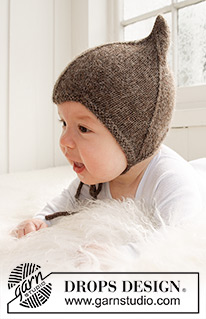
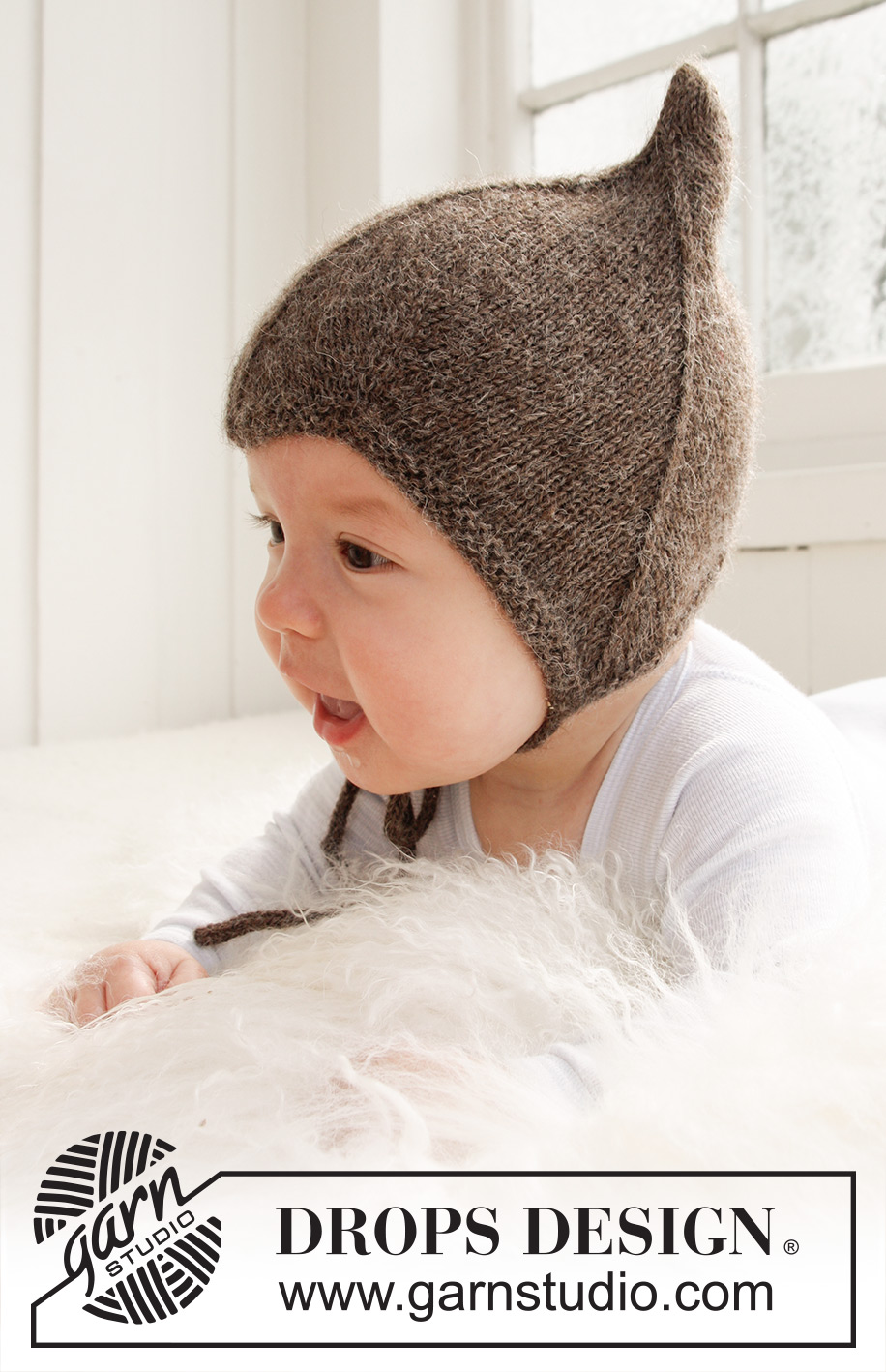




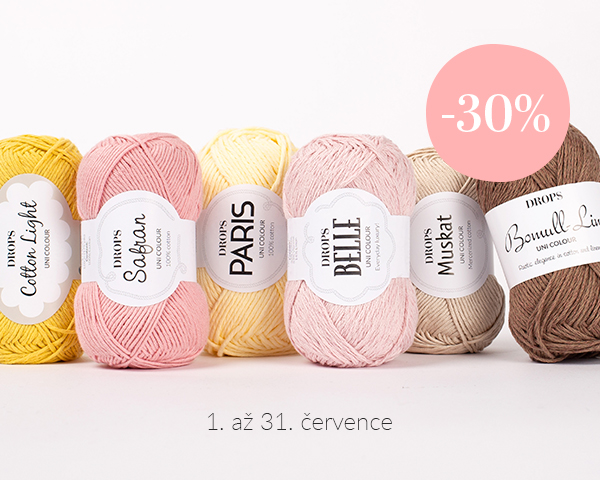



























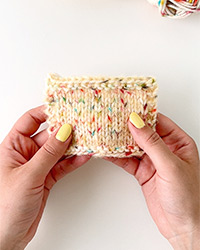
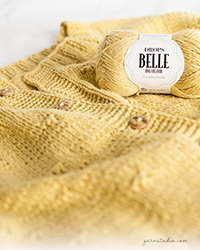
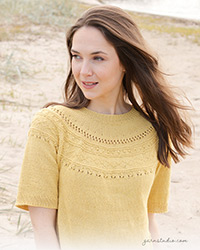
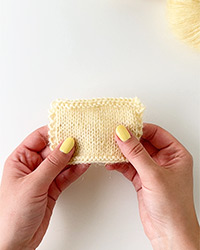

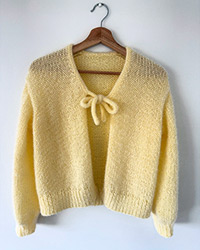
Přidejte komentář k návodu DROPS Baby 21-34
Rádi bychom věděli, co si o tomto modelu myslíte!
Pokud se chcete na něco zeptat, dbejte prosím na to, abyste ve formuláři níže vybrali správnou kategorii - díky tomu se dříve dozvíte, co potřebujete vědět. Povinná pole jsou označena *.